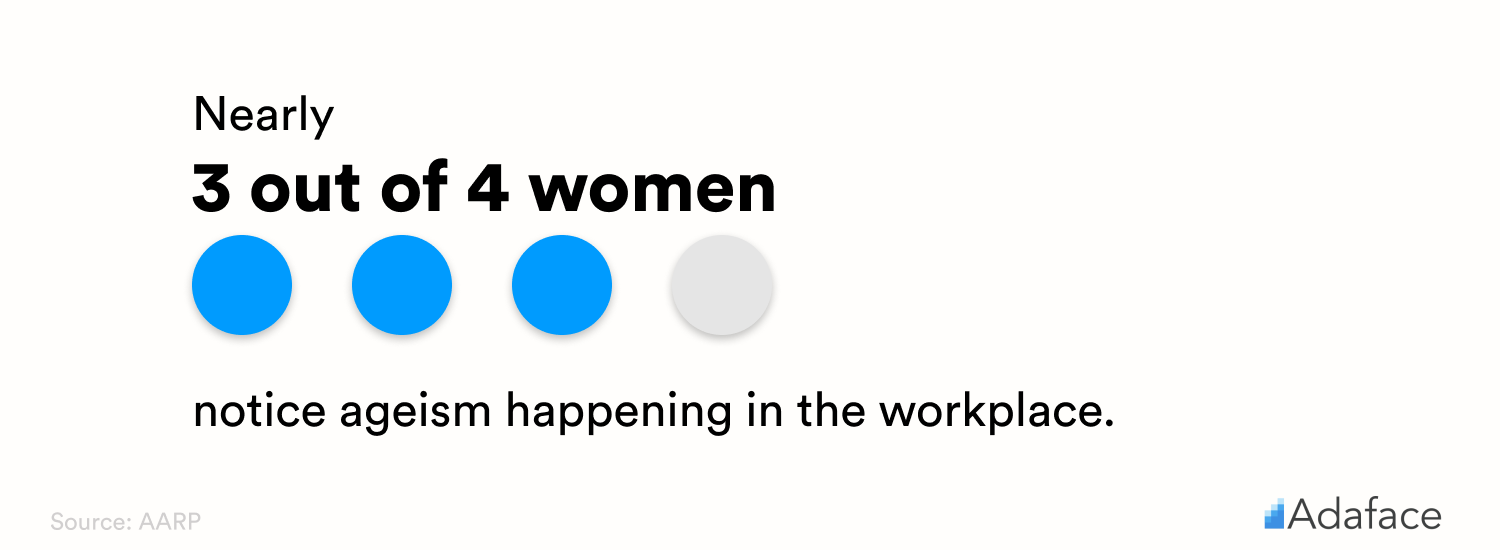

While the world has become increasingly sensitized against discrimination on the basis of race, colour, gender, sexual preferences and origin, ageism remains vastly ignored across tech firms globally. In its simplest form, ageism is discrimination against an individual on the basis of age. This includes discrimination against both, older and younger candidates.
The Issue
Surely, with you, the empathetic HR professional, in charge of things, your firm doesn’t practice ageism, or does it?
Let us take a quick look at the job descriptions rolled out by your firm in 2019/2020/2021.
Do they contain any of the following?
- The ideal candidate has 6-10 years of experience. This rules out anyone below the age of 26 and above the age of 32.
- “Digital Native”. Someone who has grown up using the internet - automatically disqualifying anyone born before 1980s.
- Enthusiastic go-getter. Someone who will slog well beyond the expected work hours and defined scope of work and has a lot of energy. Bye bye, work-life balance.
- High Potential. Unproven / less explored career so far.
Depending on the choice of words and the min/max years of experience, you are narrowing your funnel by discouraging potentially good candidates from applying because of the age filter.
How does your talent acquisition pipeline look in terms of the age distribution?
- Too many young applicants randomly applying, because YOLO!
- A low to moderate number of applicants with the defined number of years of experience.
- Very few applicants that have more than expected years of experience.
What about the reasons for rejection?
- This candidate is good, I mean they’re able to get the job done, but they’re either too young or are over qualified.
- I am not comfortable having someone 10 years senior report to me (projected the other way - I don’t think they would be comfortable reporting to someone younger).
- Cultural misfit - we are a dynamic, fast growing company, need young blood here.
- I could relate to the other candidate more, the older one didn’t have the same vibe, you know?
Why is this bad?
Suboptimal hires
In the bid to find someone that fits the ‘years of experience’ brackets, you might end up rejecting a more suitable candidate and force yourself to select from the pool that’s left.
Low diversity
By restricting the age of employees in your organization, you’re ensuring a lack of diversity.

Intentionally not tapping into “High Potential”
When you empower an employee having the sweet combination of skills & intent to create an impact with the right opportunity, magic happens. By forcing candidates to wait till they meet the “minimum number of years” metric, you lose out on a lot of growth potential for the firm.
Reinventing the Wheel
Very often, there are nuances in certain roles that become evident through repeated application. By skipping candidates that have assimilated a much deeper depth of expertise in a particular domain, you’re likely to repeat those mistakes and learn the hard way.
Contributing to your own unemployment
Imagine spending 20 years working across roles and verticals to reach the peak of your career and then having your expertise and nuanced understanding discarded because of your age. That’s what we’re teaching the next generation as the right approach to talent acquisition.
Broader Economic Impact
With life expectancy and cost of living increasing, more people will remain employed for longer. If skilled individuals are denied employment, their standard of living, health and other aspects, and consequently, the happiness of the same ‘young’ employees you’re hiring will take a hit.
How can you ensure a better tomorrow?
- Age proof your job descriptions- look out for words that discourage younger / older applicants so that you’re able to acquire the most suitable employee for each role.
- Make age an important and explicit factor in your diversity and inclusivity policies & training. Align stakeholders and empower everyone within the firm to call out bias of any kind.
- Provide psychological safety for older employees to speak to HR when they feel discriminated against (e.g. made redundant / have ideas shot down because it came from an oldie / a fellow employee passed a remark indicating they’re old in bad taste) instead of feeling redundant, dropping in productivity and resigning.
- Actively work towards improving the age diversity of your organisation, expanding to both sides of your organisation’s median age.
- Improve your employer branding by focusing on multi-generational content.
- Use tools such as Adaface to manage a huge influx of talented candidates, screening them objectively for the skills required rather than using random numbers as a proxy for talent.

Spending too much time screening candidates?
We make it easy for you to find the best candidates in your pipeline-
with a 40 min skills test.


